One of the most captivating experiences when visiting Cuba is exploring a farm in the island’s interior. During our last trip, we visited a farm near Viñales, a village set in a breathtaking, fertile valley surrounded by steep-sided limestone hills known as mogotes. After spending time in the gritty, urban atmosphere of Havana, this lush, jungle-like region feels like a different world.
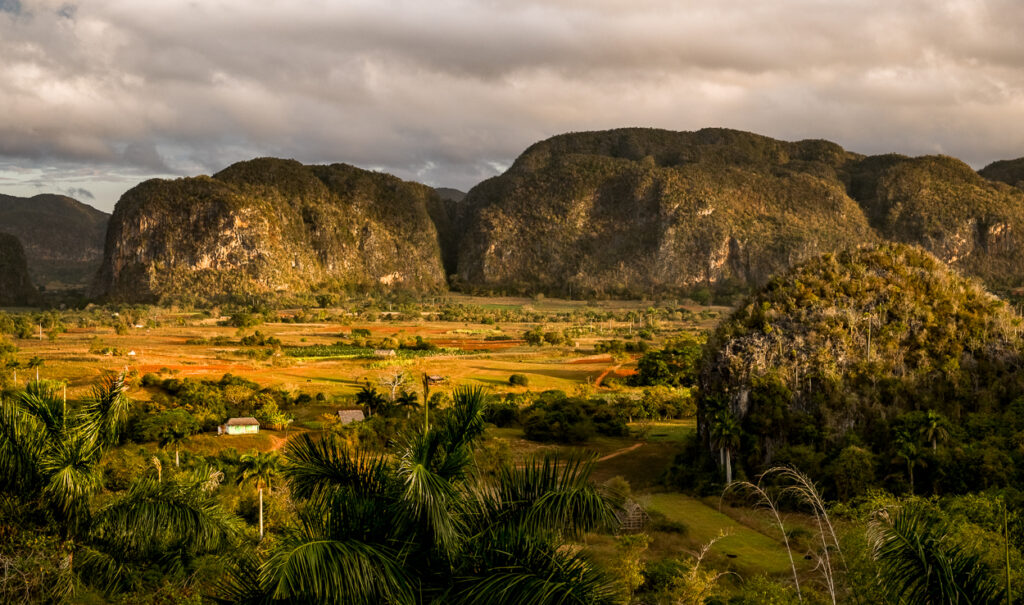
In Viñales, it seems as if all of Cuba is farmland. However, today, only about 30% of the land is used for crop cultivation, employing roughly 20% of the working population while contributing less than 10% to the country’s gross domestic product. Cuba produces sugarcane, tobacco, citrus, coffee, rice, potatoes, beans, and livestock. Tourists tend to visit tobacco farms, so much so that their deep integration with tourism makes them seem more a part of the service industry and less like traditional agriculture, despite still being working farms.
Farming is hard work anywhere, but in Cuba, it remains a largely manual process. Most farmers cannot afford machinery, and even if they have old equipment, finding replacement parts is nearly impossible. As a result, it’s common to see farmers using oxen, horse-drawn carts, pick-axes, and other tools powered solely by human strength.
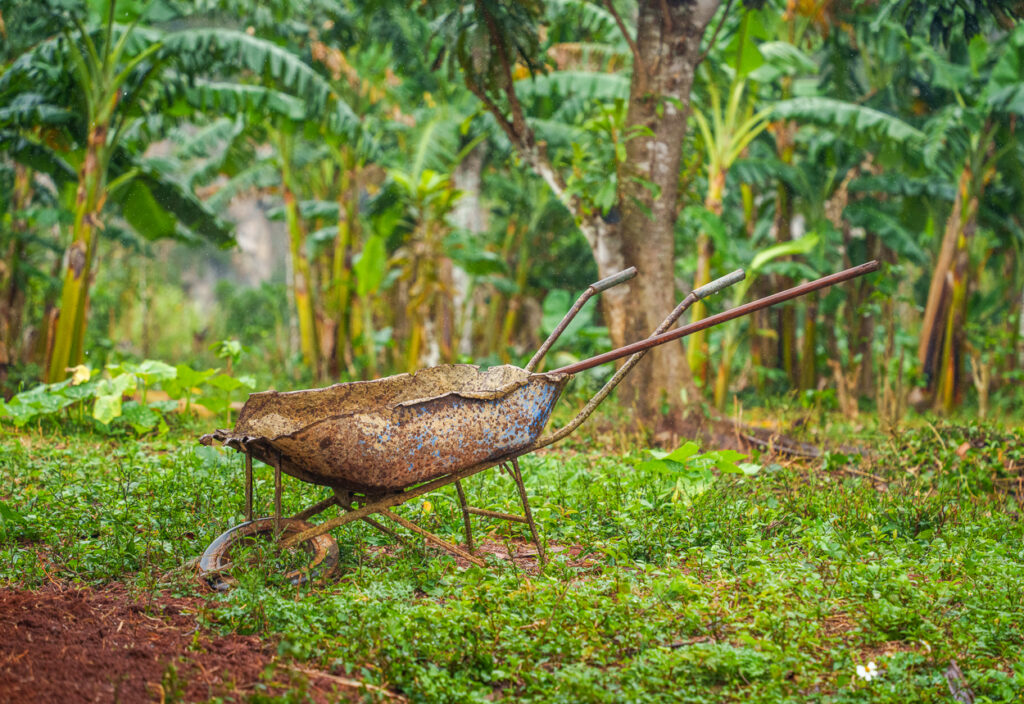
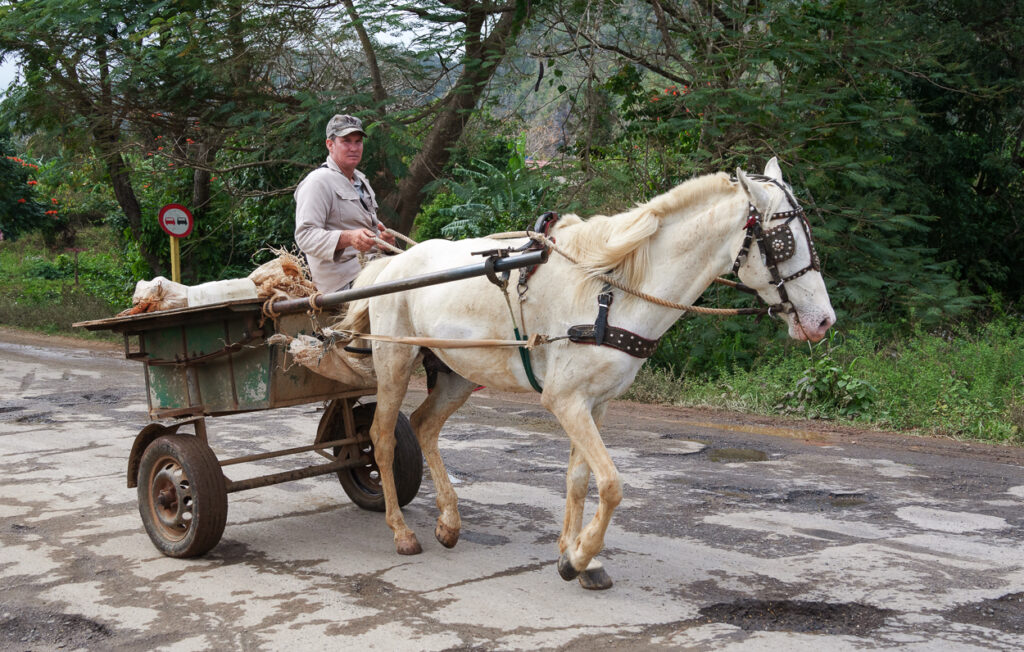
Following the Cuban Revolution, the government nationalized farmland, taking control of most agricultural production. It wasn’t until the mid-90s that farmers were allowed to keep and sell their surplus directly to other Cubans. Even today, tobacco farmers can only retain 10% of what they grow, with the majority going to the government.
I have visited Cuba many times, and on each trip, I make a point of visiting farms. While each farm is unique, the experience always feels familiar. During our most recent trip in 2024, we ventured even further into the countryside and spent considerable time on a working farm that produced more than just tobacco. We learned about the cultivation and processing of coffee, cassava root—a versatile staple that can be eaten whole, grated, or ground into flour—and sugarcane, in addition to tobacco. This farm also raises poultry and livestock and likely other fruits and vegetables we didn’t see.
Coffee
Coffee plants are woody evergreens that thrive in warm, humid climates, making Cuba an ideal place for their cultivation. The plants produce fragrant flowers, which eventually give way to coffee berries, known as cherries, that turn deep red when ripe. Though we didn’t see coffee plants firsthand, I stumbled upon a large mortar and pestle. A simple question about its purpose led us on an unexpected journey through the coffee-making process, from dried beans to freshly brewed cup.
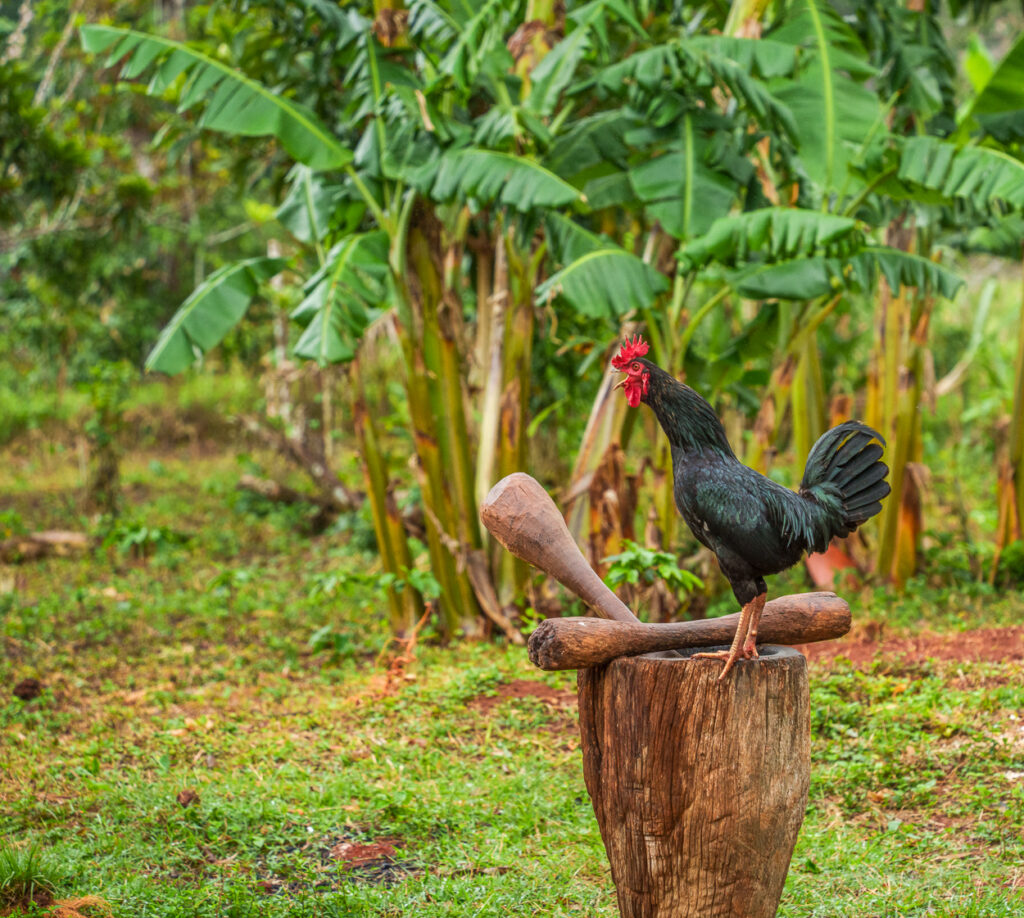
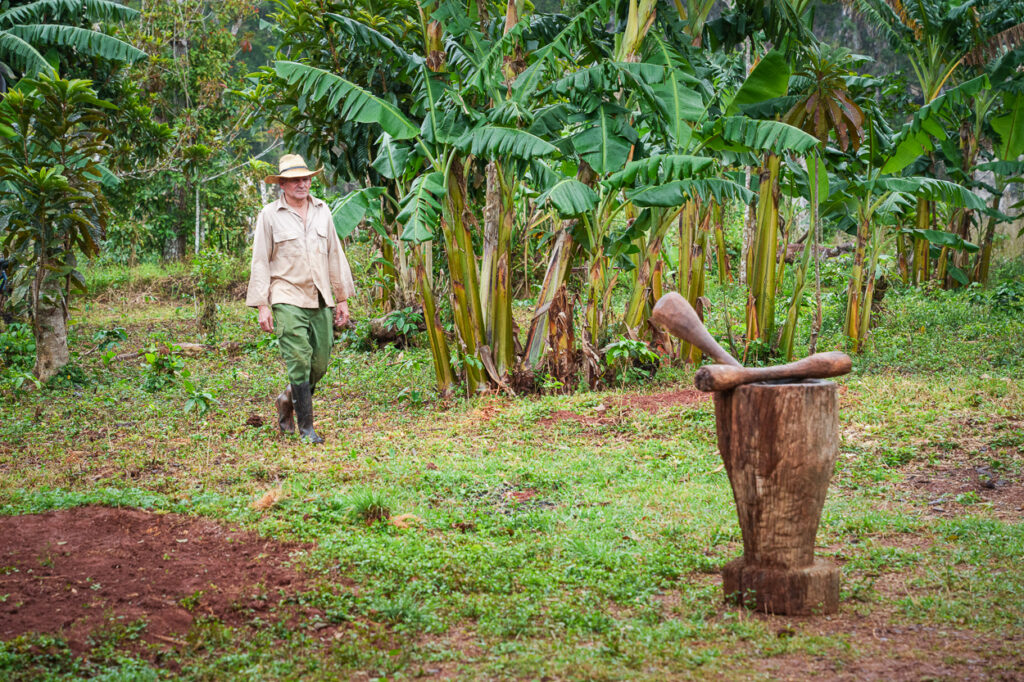
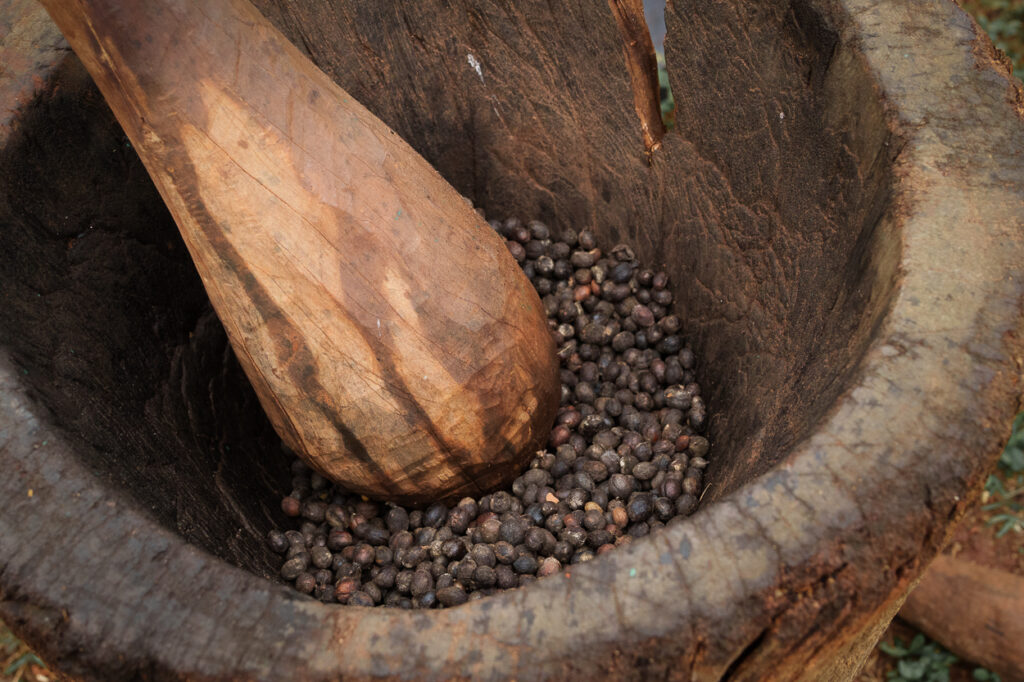
Coffee cherries are typically hand-harvested before being processed to extract the seeds—what we know as coffee beans. These beans are then dried before being placed in a mortar, where they are pounded by hand to crack their shells. The farmer then skillfully sifts the beans through his hands, letting the wind carry away dust and unwanted fragments.
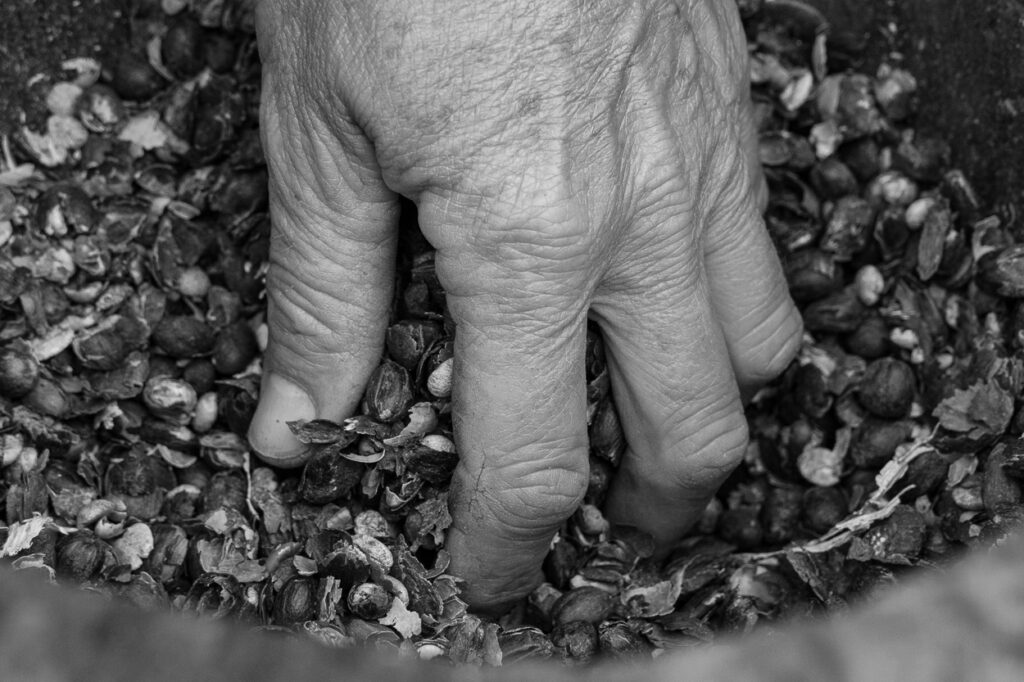
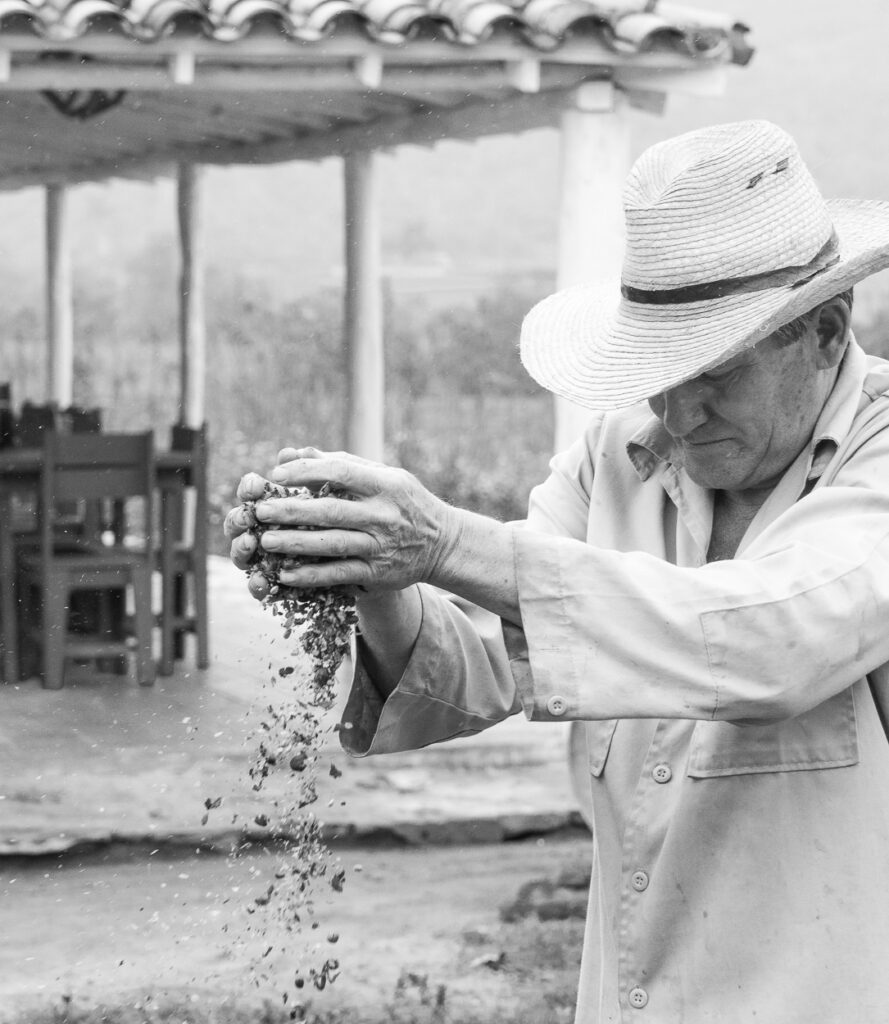
Next, the beans are roasted in a pan over high heat, a process that takes 20 to 30 minutes. After cooling, the beans are stored or ground for brewing. We were fortunate to taste the freshly roasted coffee and even brought home a water bottle filled with beans—since traditional packaging like bags or cans wasn’t available, we made do with what we had.
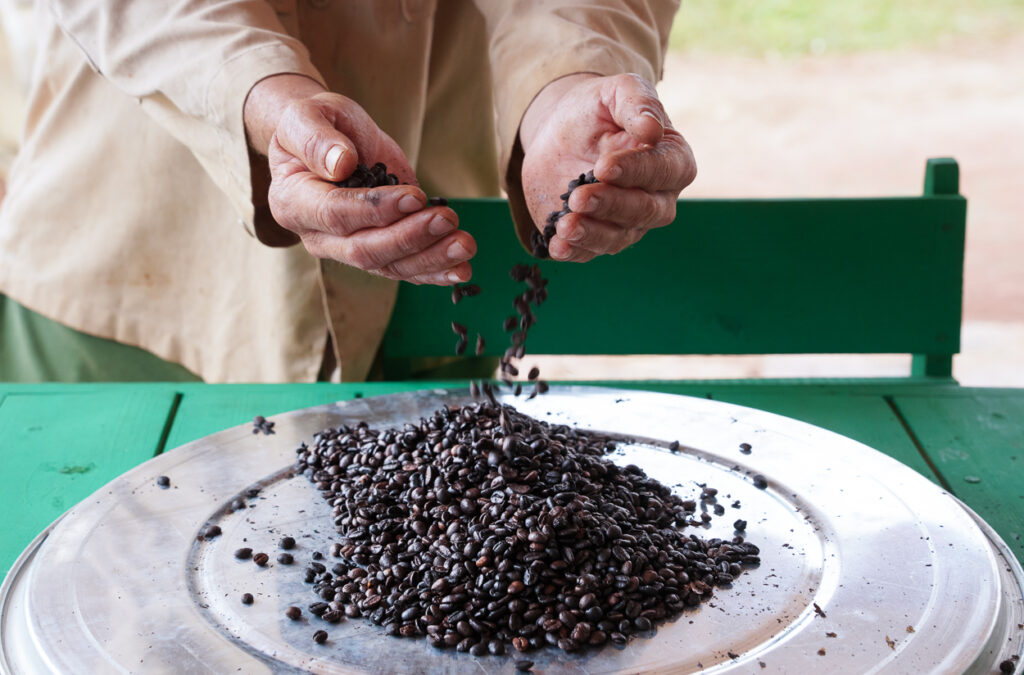
Cassava Root
Another farmer demonstrated the labor-intensive process
of finding and harvesting cassava root. Using a pick-axe, he chipped away at the hard, red-clay soil until he located a root. Once partially unearthed, the pick-axe was set aside, and he pulled the cassava out by hand—a process that left his hands cracked and his nails broken from the strain.
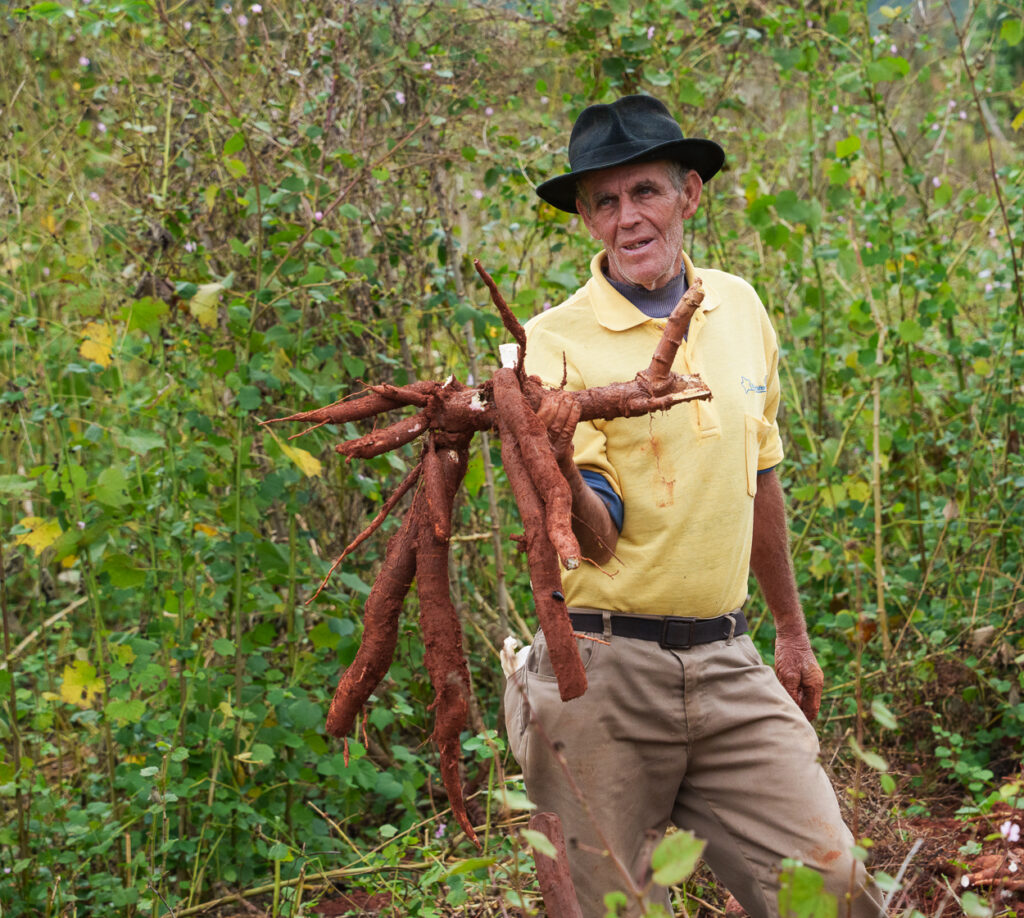
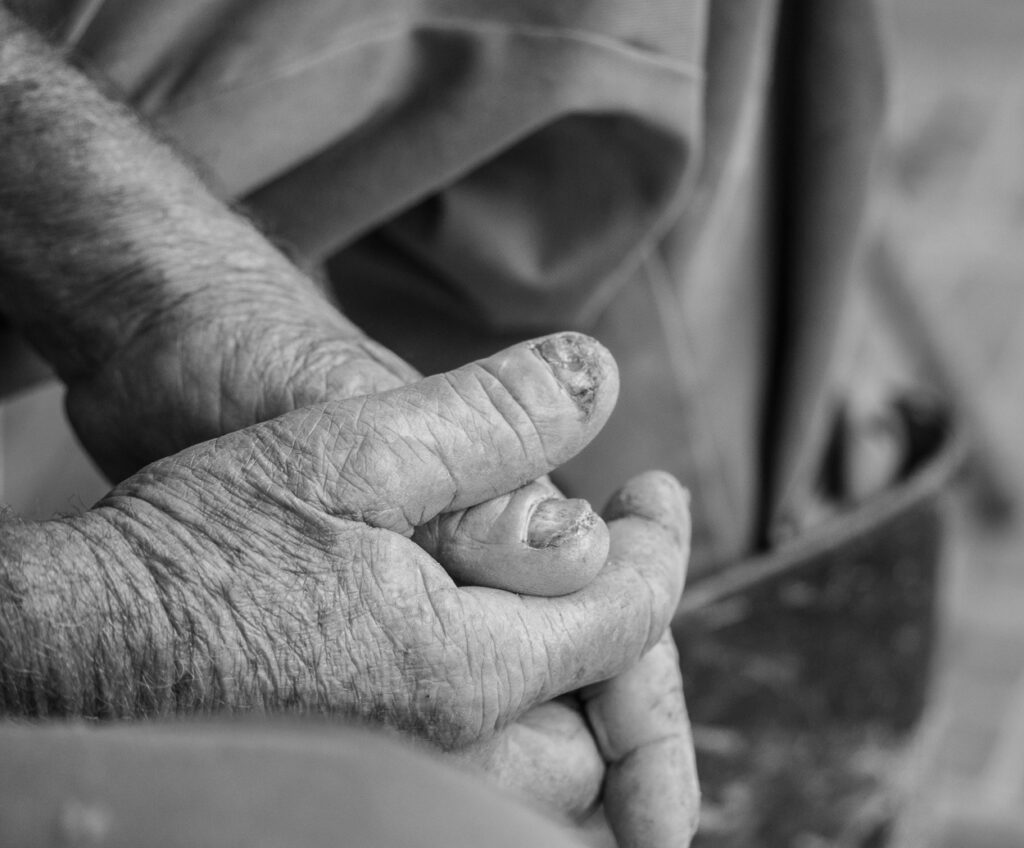
Sugarcane
The same farmer also showed us how sugarcane is processed on the farm. Sugarcane was once Cuba’s most mechanized agricultural product, with most of its equipment coming from the Soviet Union. However, today, much of that machinery sits idle due to a lack of spare parts. Until the 1960s, over 30% of U.S. sugarcane imports came from Cuba.
On this farm, sugarcane is harvested by machete. The stalks are then fed through a machine that crushes the hard outer shell, allowing the pulp to be processed into sugar and syrup. We sweetened our coffee with freshly made syrup—a rare and delightful treat.
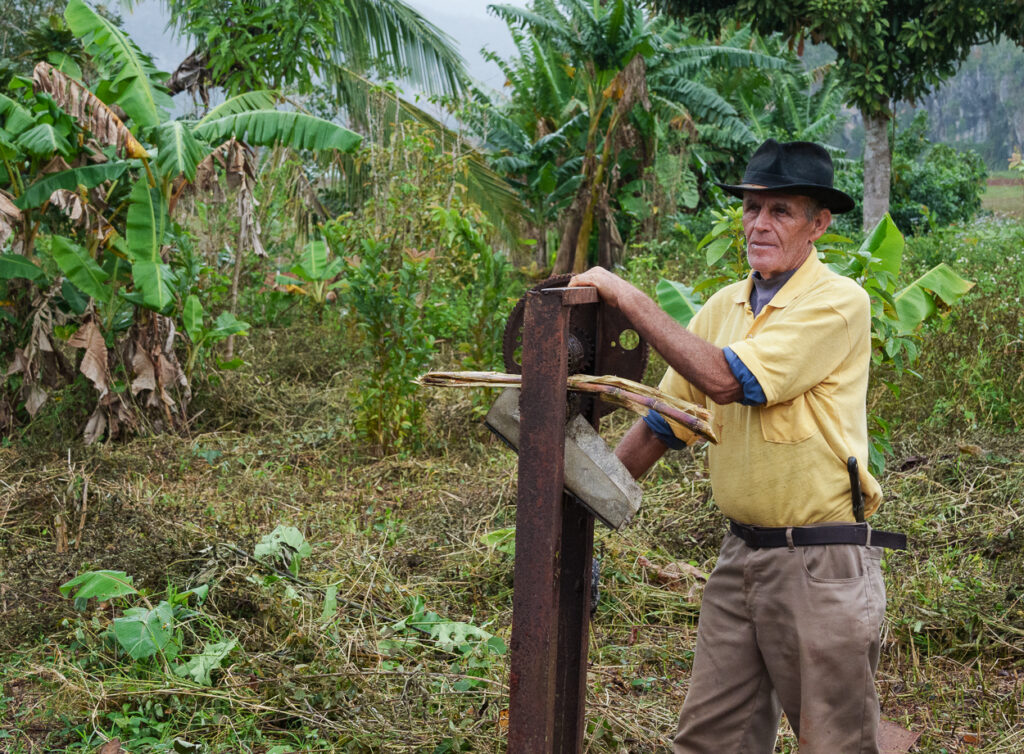
Tobacco
Of course, no farm visit in Cuba would be complete without learning about tobacco cultivation.
We began in the tobacco fields, where farmers carefully manage the plants by pinching off their flowers.
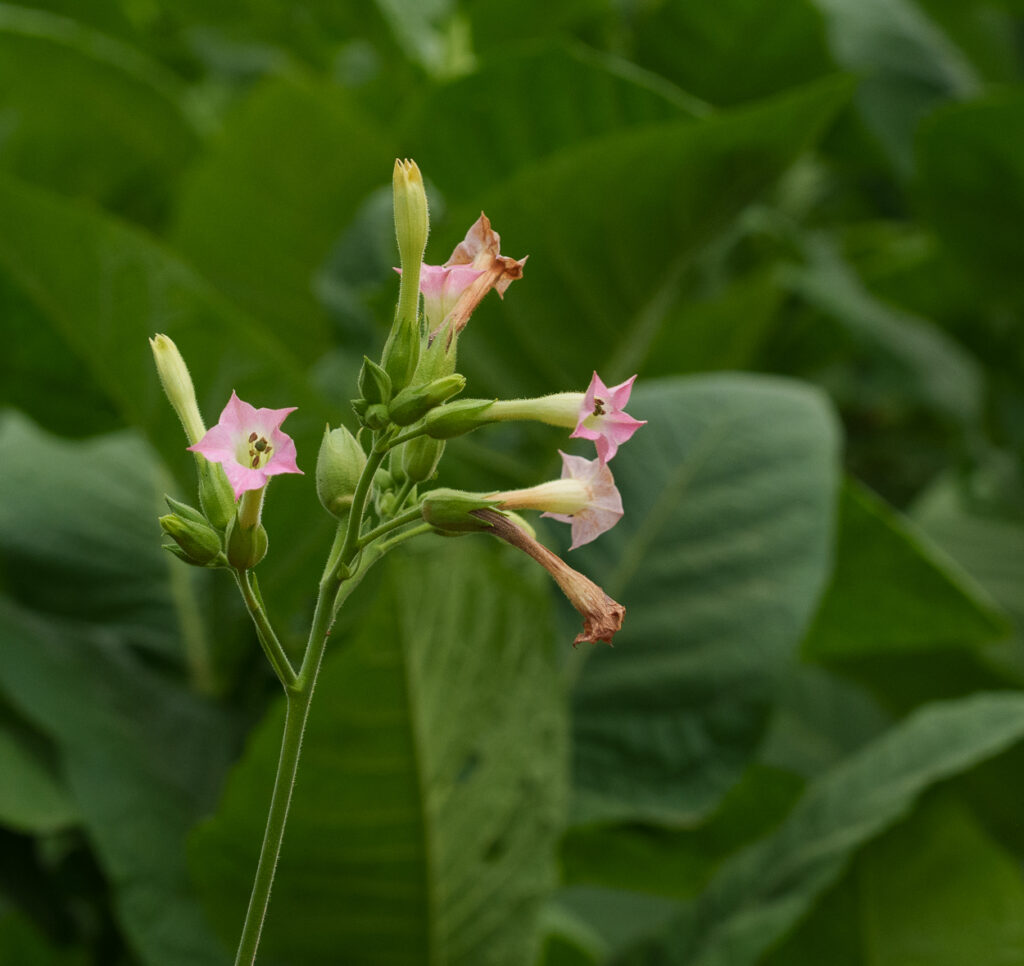
If allowed to bloom, the plants divert energy toward reproduction rather than leaf growth. By removing the flowers, the plant’s energy remains focused on developing robust leaves.
As is common in Cuba, tobacco on this farm is picked by hand, leaf by leaf, as it ripens. Typically, harvesting starts from the bottom of the plant, where the most mature leaves grow. The location of a leaf on the stalk influences its taste and depth of flavor. Since farmers are permitted to keep only 10% of their harvest, they are careful to select the best leaves first.
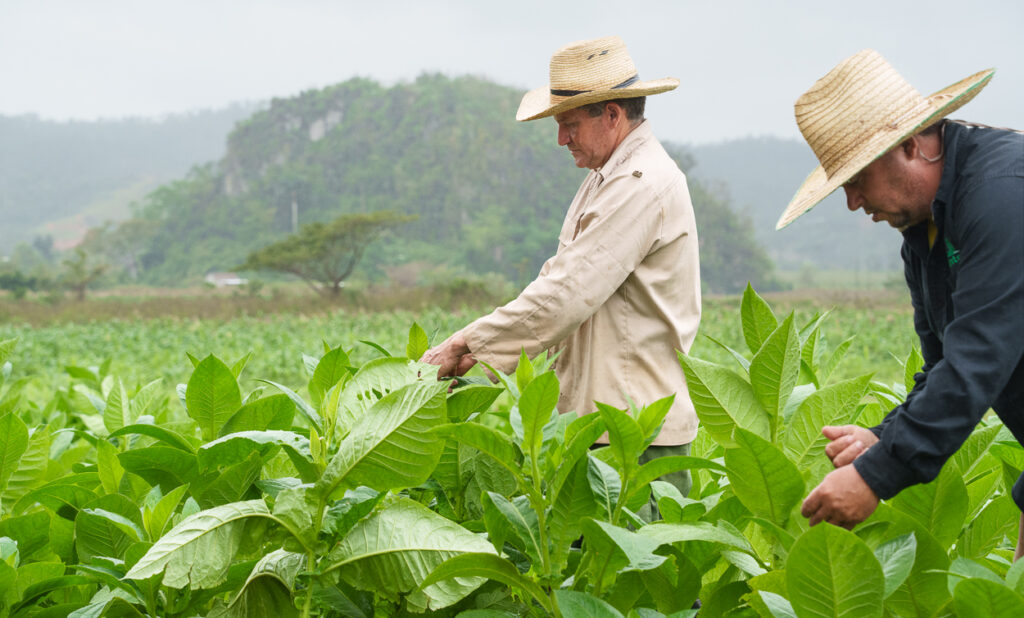
After harvesting, the leaves undergo a curing process. Every farm I have visited air-cures its tobacco. The leaves are sorted, bundled, and hung from wooden beams inside a dark tobacco barn.
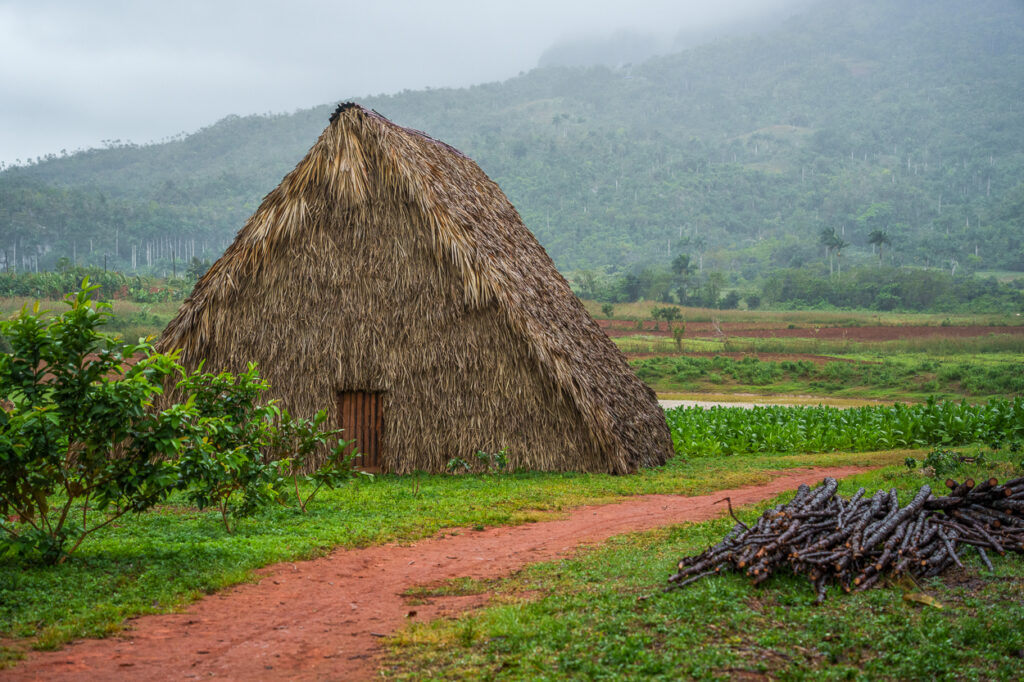
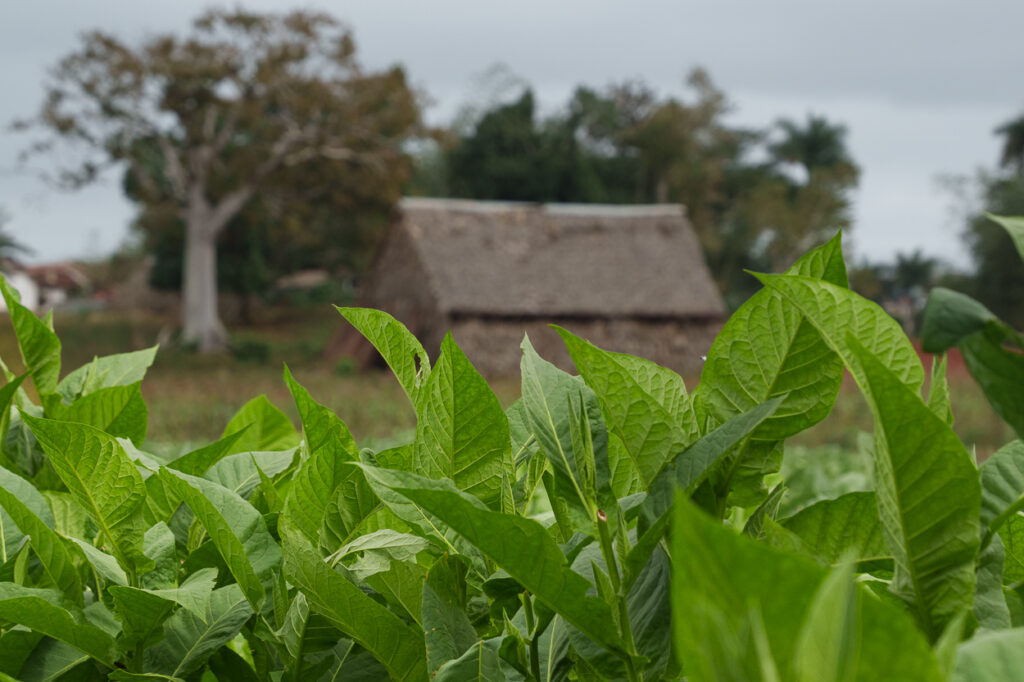
Sorting and drying are often the responsibilities of the women on the farm. Hanging the leaves allows moisture to evaporate, gradually changing their color from green to yellow to brown. Once dried, the leaves are packed into bales and left to ferment—a process that takes anywhere from two to five years.
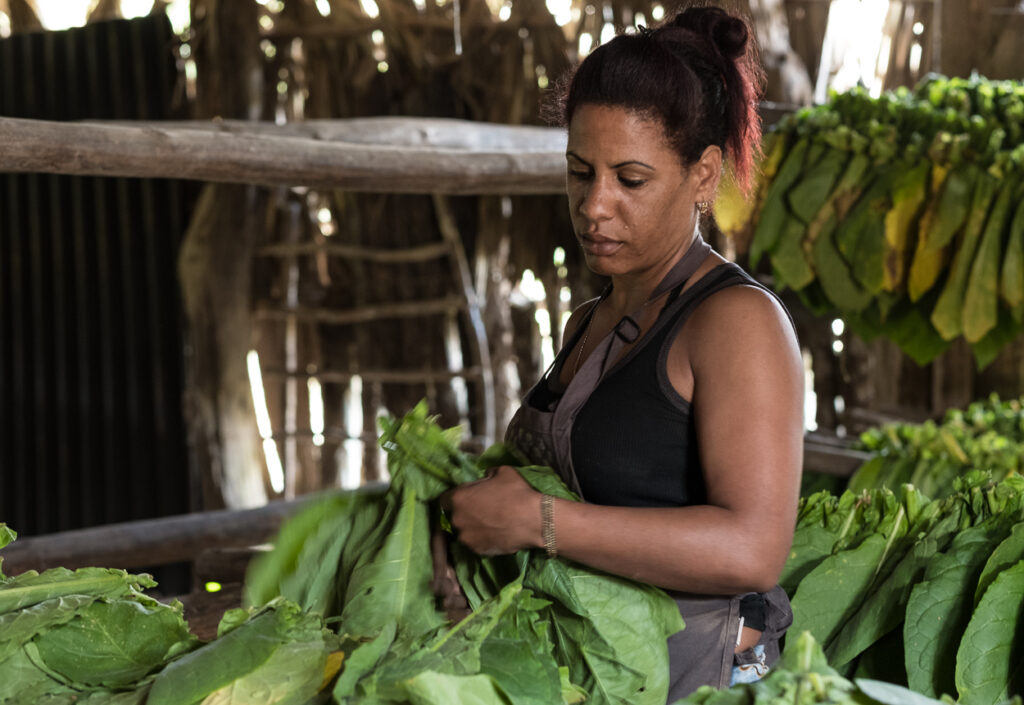
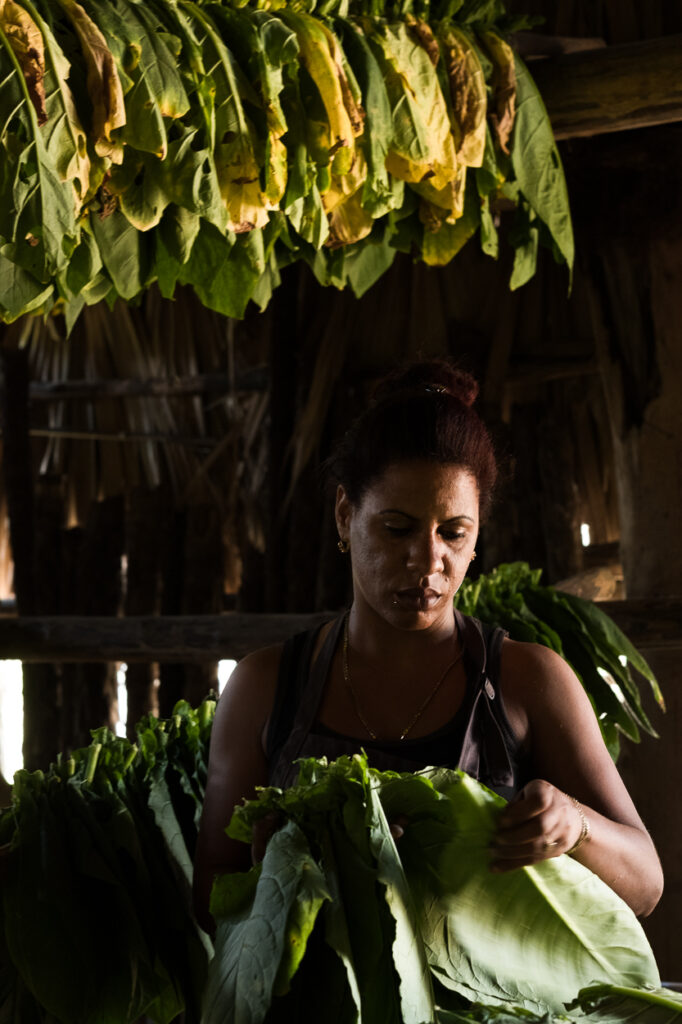
After fermentation, the leaves are de-stemmed and categorized based on their role in cigar-making: filler, binder, or wrapper. Finally, the prepared leaves are rolled into cigars.

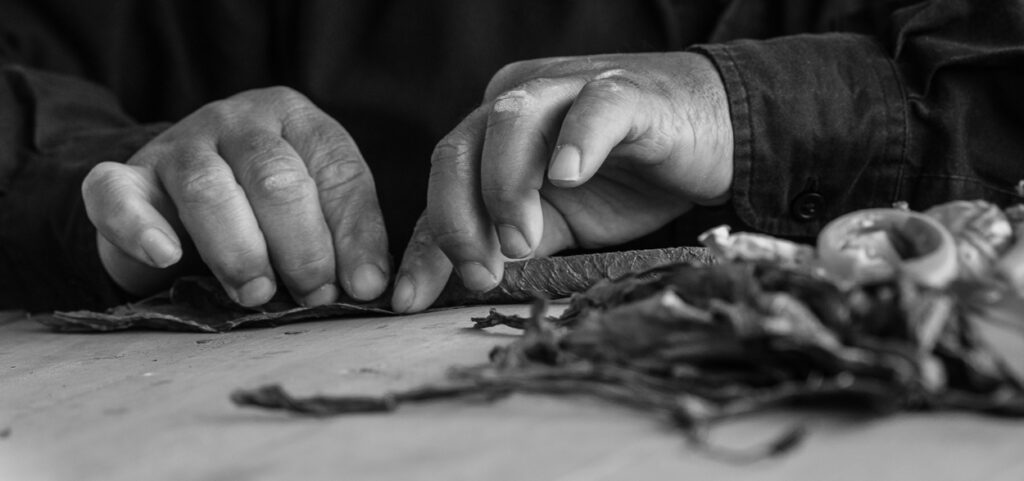
The most expensive cigars are crafted from tobacco aged the longest, as time enhances the complexity and depth of flavor. In fact, a cigar’s taste continues to evolve as it matures in a humidor.
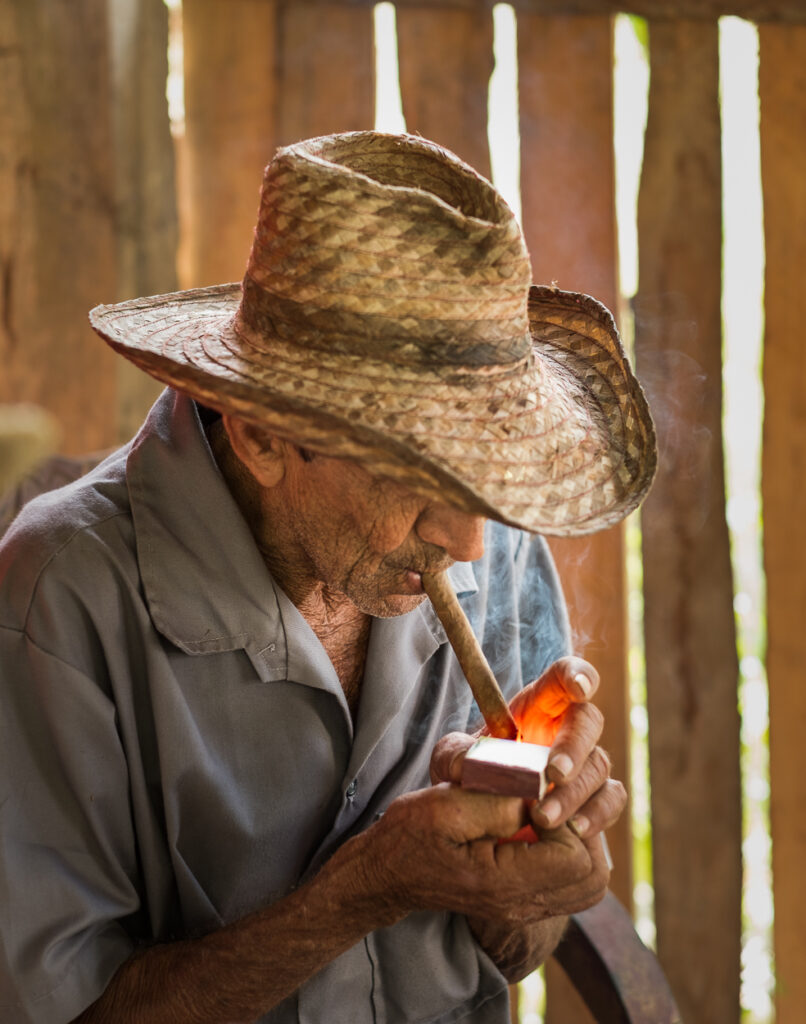
For all the joy that smoking a fine Cuban cigar may bring, the handling of tobacco leaves is not without risk—exposure to raw leaves can cause nicotine poisoning, leading to nausea, dizziness, and vomiting. However, you would never sense any discomfort from the farmers, likely due to a lifetime of working with tobacco.
Throughout Havana, produce carts are a common sight. At first glance, one might assume that the fruits and vegetables come from the farmlands of Viñales. However, that’s not the case. Transporting goods from rural farms to these city stalls would be too costly. Instead, the produce sold in Havana is grown locally in urban farms and gardens.
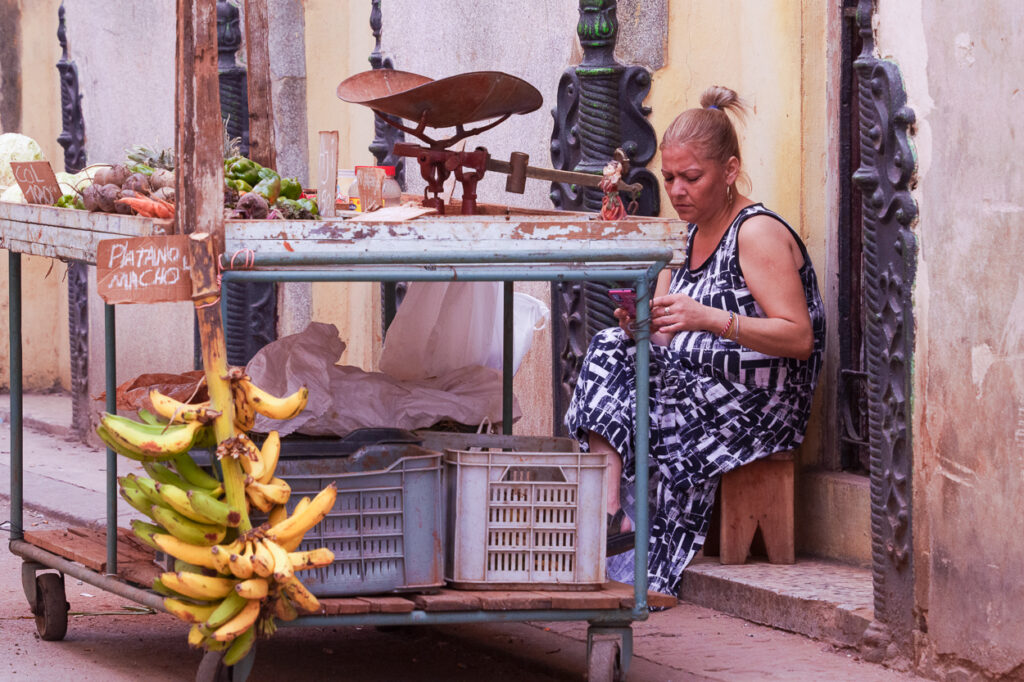
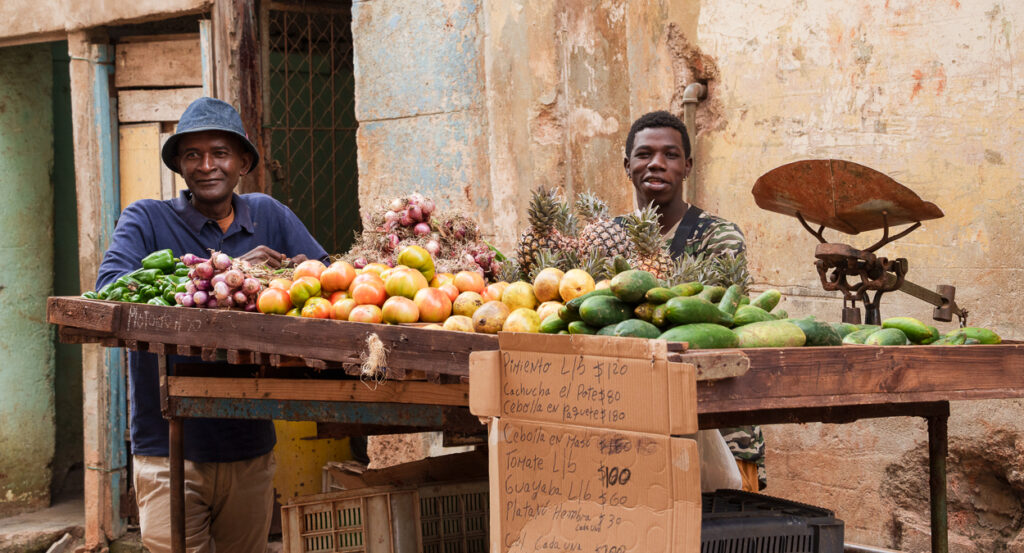
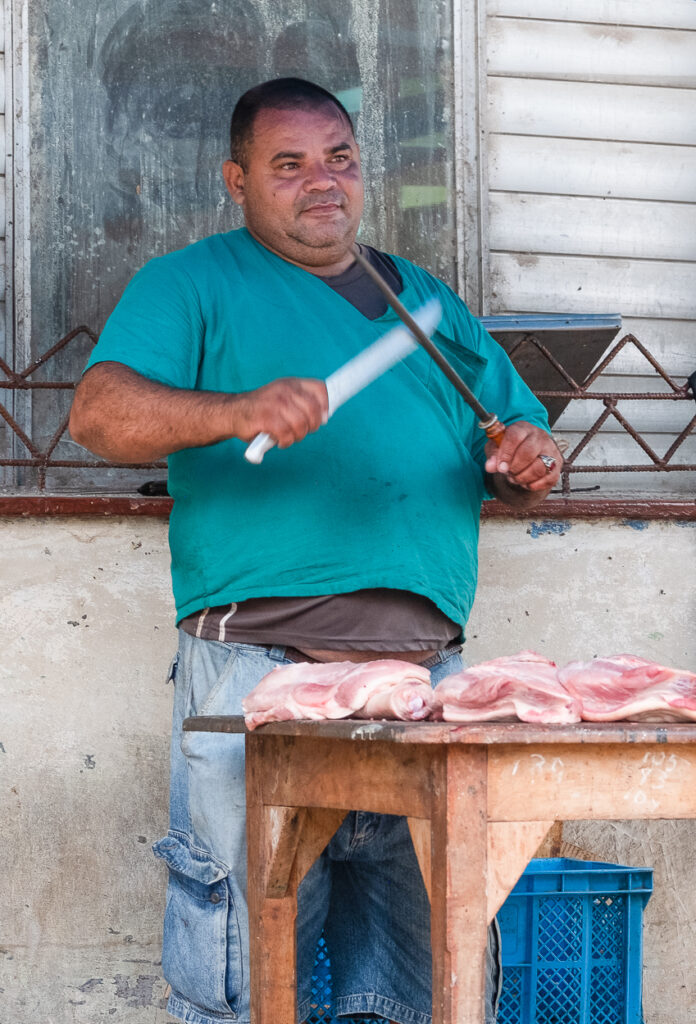
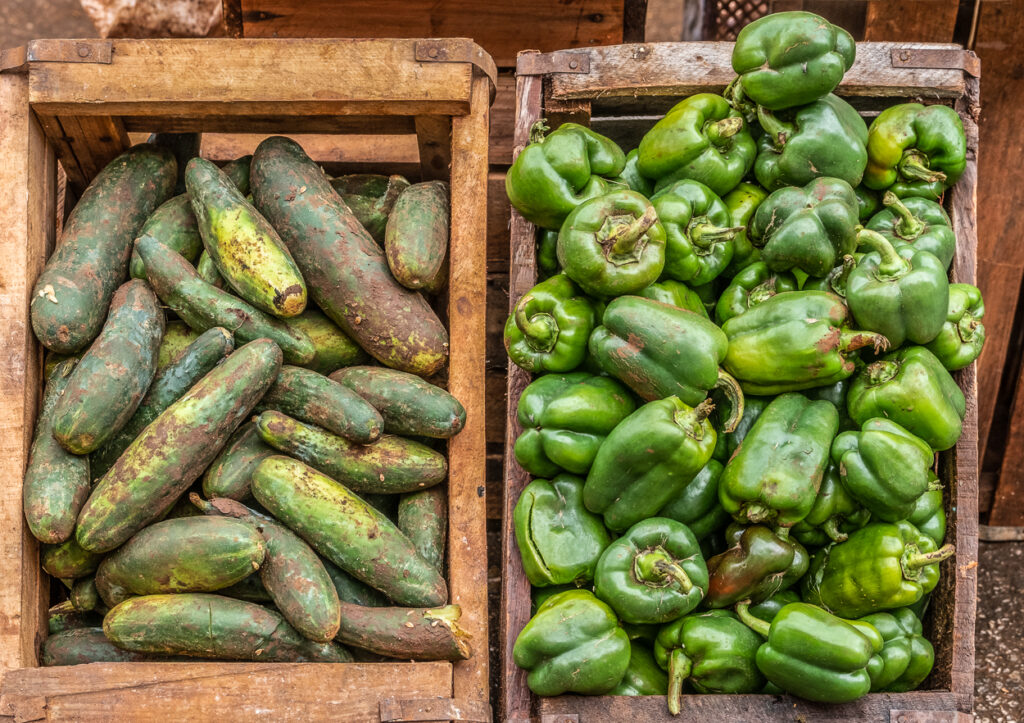
After our tour, we were treated to a delicious meal made entirely from ingredients produced on the farm. Immersing ourselves in the daily lives of these farmers was an incredibly rewarding experience. We found them to be warm, humorous, and open about their realities. They generously shared their time, food, and homes with us, creating a memory we will always treasure. Given the opportunity, I would do it all over again.
![]()
